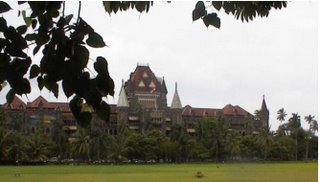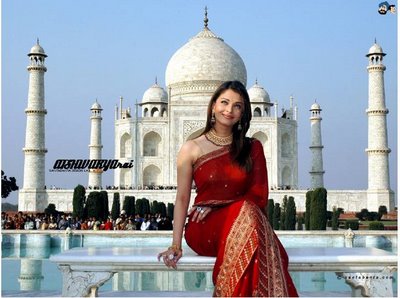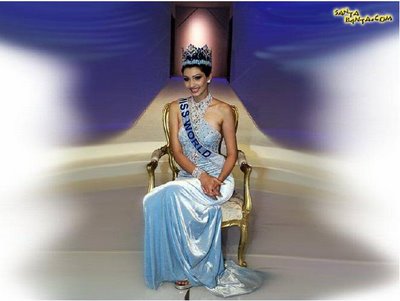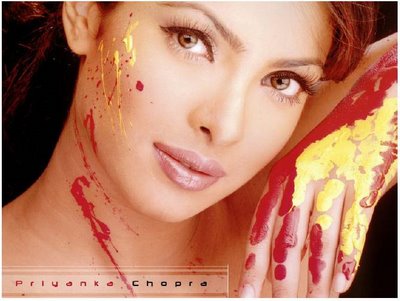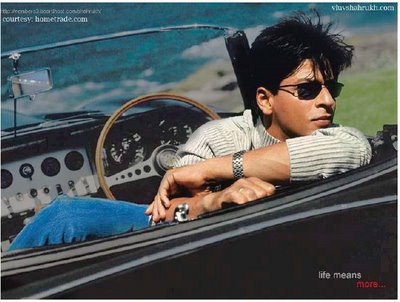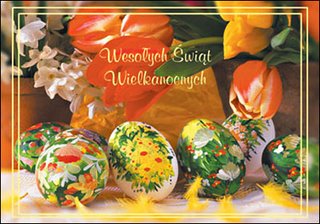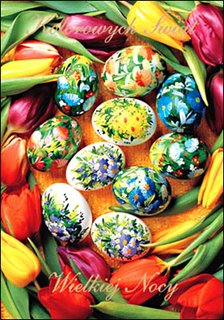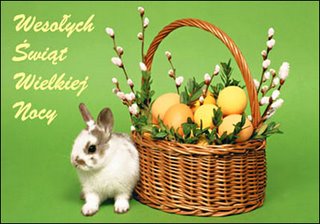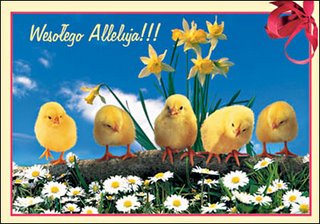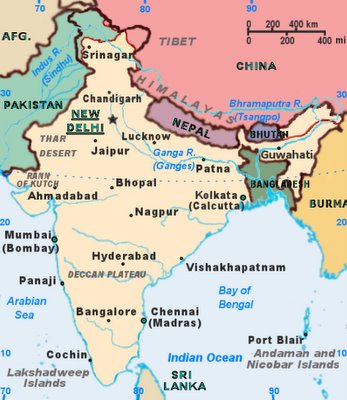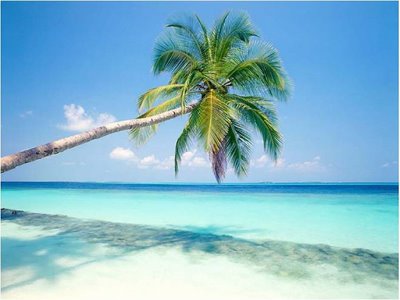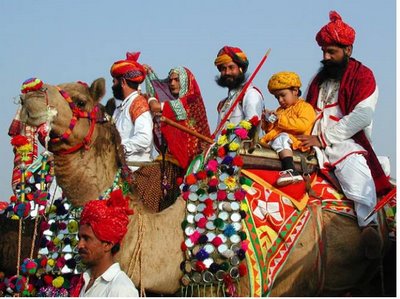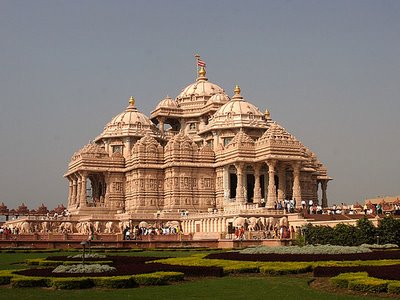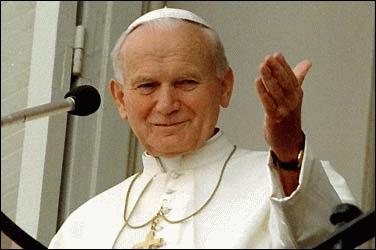Today I feel I should write some words about Polish Pope who died one year ago and the anniversary of his death was celebrated in Poland some days ago.
Here some words about his biography. There are some commonly less or more known facts but I have thought he had the third longest pontificate when I have just read - the second longest. Fine - who had the longest one? Saint Peter only? Interesting.
Besides you should know - cause it isn't written in most of great encyclopedias that some centuries before one famous Polish national poet predicted that a Slavian pope will take a Peter's throne in Rome. He probably had a dream or was in a very prophetical mood. Well... but 200 years it happened he was right. I think it is worthy to write it. I think next Pope will be French or Italian for sure. I cannot imagine anything else:(. Of course I wish all the best to the Benedict XVI but such are my suspicions as deals his succesors.
Karol Józef Wojtyła was born on
18 May 1920 in
Wadowice in southern
Poland. His Lithuanian mother, Emilia Kaczorowska, died in 1929, when he was just aged 9 and his father supported him so that he could study. His youth was marked by extensive contacts with the then thriving
Jewish community of
Wadowice. In fact, he grew up playing soccer in the streets of
Wadowice with his Jewish friends and neighbors.
Karol enrolled at the
Jagiellonian University in
Kraków. He worked as a volunteer librarian and did compulsory military training in the Academic Legion. In his youth he was an
athlete,
actor and
playwright and he learned as many as twelve
languages during his lifetime, including Latin, Ukrainian, Greek, Spanish, Portuguese, French, Italian, German, English, and of course his native Polish. He also had some facility with Russian.
During the
Second World War academics of the Jagiellonian University were arrested and the university suppressed. All able-bodied males had to have a job. He variously worked as a messenger for a restaurant and a manual labourer in a limestone quarry.
Church career
In 1942 he entered the
underground seminary run by the Archbishop of
Kraków,
Cardinal Sapieha. Karol Wojtyła was
ordained a
priest on
1 November 1946. Not long after, he was sent to study
theology at the
Pontifical University of Saint Thomas Aquinas, commonly known as the
Angelicum, where he earned a
licentiate and later a
doctorate in sacred theology. This doctorate, the first of two, was based on the Latin dissertation Doctrina de fide apud S. Ioannem a Cruce (The Doctrine of Faith According to Saint John of the Cross). Even though his doctoral work was unanimously approved in June of 1948, he was denied the degree because he could not afford to print the text of his dissertation (an Angelicum rule). In December of that year, a revised text of his dissertation was approved by the theological faculty of
Jagiellonian University in
Kraków, and Wojtyła was finally awarded the degree.
He earned a second doctorate, based on an evaluation of the possibility of founding a Catholic ethic on the ethical system of
phenomenologist Max Scheler (An Evaluation of the Possibility of Constructing a Christian Ethics on the Basis of the System of Max Scheler), in 1954. As was the case with the first degree, he was not granted the degree upon earning it. This time, the faculty at Jagiellonian University was forbidden by communist authorities from granting the degree. In conjunction with his
habilitation at
Catholic University of Lublin,
Poland, he finally obtained the
doctorate in
philosophy in 1957 from that institution, where he had assumed the Chair of Ethics in 1956.
On
4 July 1958 Pope Pius XII named him
titular bishop of
Ombi and auxiliary to Archbishop Baziak, apostolic administrator of the
Archdiocese of
Kraków. Karol Wojtyła found himself at 38 the youngest
bishop in
Poland.
In 1962 Bishop Wojtyła took part in the
Second Vatican Council, and in December 1963
Pope Paul VI appointed him
Archbishop of
Kraków. Paul VI elevated him to
cardinal in 1967.
A Pope from PolandIn August 1978 following Paul's death, he voted in the
Papal Conclave that elected
Pope John Paul I, who at 65 was considered young by papal standards. However John Paul I was in poor health and he died after only 33 days as pope, thereby precipitating another conclave.
Voting in the second conclave was divided between two particularly strong candidates:
Giuseppe Cardinal Siri, the Archbishop of
Genoa; and
Giovanni Cardinal Benelli, the Archbishop of
Florence and a close associate of
Pope John Paul I. In early ballots, Benelli came within nine votes of victory. However Wojtyła secured election as a compromise candidate, in part through the support of
Franz Cardinal König and others who had previously supported Cardinal Siri.
He became the 264th Pope according to the Vatican. At only 58 years of age, he was the youngest pope elected since
Pope Pius IX in
1846. Like his immediate predecessor, Pope John Paul II dispensed with the traditional
Papal coronation and instead received ecclesiastical
investiture with the simplified
Papal inauguration on
October 22,
1978. As
Bishop of Rome he took possession of his
Cathedral Church, the
Basilica of St. John Lateran, on
November 12,
1978.
Assassination attemptsOn
13 May 1981 John Paul II was shot and critically wounded by
Mehmet Ali Ağca, a
Turkish gunman, as he entered
St. Peter's Square to address an audience. Ağca was caught and sentenced to
life imprisonment. Two days after
Christmas 1983, John Paul II visited the prison where his would-be assassin was being held. The two spoke privately for 20 minutes. John Paul II said, "What we talked about will have to remain a secret between him and me. I spoke to him as a brother whom I have pardoned and who has my complete trust."
On
March 2,
2006, an Italian parliamentary commission concluded that the Soviet Union was behind the attempt, in retaliation for John Paul II's support to
Solidarity, the Polish workers' movement, a thesis which had already been supported by
Michael Ledeen and the
CIA at the time. The report stated that certain Bulgarian security departments were utilized to prevent the Soviet Union's role from being uncovered. However, alternative theories also exist, and the Pope himself declared during a May 2002 visit to Bulgaria that this country had nothing to do with the assassination attempt. The failed assassin was also a member of the ultra-nationalist Turkish
Grey Wolves, who were allegedly infiltrated by
Gladio, a NATO sponsored paramilitary organization created in order to counter a potential Soviet invasion. Bulgaria and Russia disputed the Italian commission's conclusions, pointing out that the Pope denied the Bulgarian connection.
Another assassination attempt took place on
12 May 1982, just a day before the anniversary of the last attempt on his life, in
Fatima, Portugal when a man tried to stab John Paul II with a
bayonet, but was stopped by security guards. The assailant, an ultraconservative and right wing Spanish
priest named
Juan María Fernández y Krohn, reportedly opposed the reforms of the
Second Vatican Council and called the pope an agent of
Moscow. He subsequently left the Roman Catholic priesthood and served a six-year sentence, and was expelled from Portugal afterwards.
HealthMain article:
Health of Pope John Paul IIWhen he first entered the
papacy in 1978, John Paul II was an avid sportsman, enjoying
hiking and
swimming. In addition, John Paul II travelled extensively after becoming pope; at the time, the 58-year old was extremely healthy and active.
In 1981, though, John Paul II's health suffered a major blow after the first failed
assassination attempt. The bullet-wound caused severe
bleeding, and the Pope's
blood pressure dropped. In addition, a
colostomy was also performed. He nevertheless maintained an impressive physical condition throughout the 1980s.
Starting about 1992, John Paul II's health slowly declined. He began to suffer from an increasingly slurred speech and difficulty in hearing. In addition, the Pope rarely walked in public. Though not officially confirmed by the
Vatican until 2003, most experts agreed that the frail pontiff suffered from
Parkinson's Disease.
In February 2005 John Paul II was taken to the hospital with an inflammation of the
larynx, the result of
influenza. Though later released from the hospital, he was taken back later that month after difficulty breathing. A
tracheotomy was performed, limiting the pope's speaking abilities.
In March of 2005, speculation was high that the Pope was near death; this was confirmed by the Vatican a few days before John Paul II passed away.
DeathOn
31 March 2005 the Pope developed a very high fever, but was neither rushed to the hospital, nor offered life support, apparently, in accordance with his wishes to die in the Vatican. Later that day Vatican sources announced that John Paul II had been given the
Anointing of the Sick by his friend and secretary
Stanisław Dziwisz. During the final days of the Pope's life, the lights were kept burning through the night where he lay in the Papal apartment on the top floor of the
Apostolic Palace.
Thousands of people rushed to the Vatican, filling
St Peter's Square and beyond, and held vigil for two days. At about 15:30 CEST, John Paul II spoke his final words, "Let me go to the house of the Father", to his aides in his native Polish and fell into a
coma about four hours later. He died in his private apartments, at 21:37
CEST (19:37
UTC) on
2 April, 46 days short of his 85th birthday. Mass of the vigil of the Second Sunday of Easter, that is, Divine Mercy Sunday, had just been celebrated at his bedside.
A crowd of over two million within Vatican City, over one billion Catholics world-wide, and many non-Catholics mourned John Paul II. The
Poles were particularly devastated by his death. The public viewing of his body in
St. Peter's Basilica drew over four million people to Vatican City and was one of the largest
pilgrimages in the
history of Christianity. Many world leaders expressed their condolences and ordered flags in their countries lowered to half-mast. Numerous countries with a Catholic majority, and even some with only a small Catholic population, declared mourning for John Paul II.
FuneralThe death of Pope John Paul II set into motion
rituals and traditions dating back to
medieval times. The
Rite of Visitation took place from
4 April through 22:00 CET (20:00
UTC) on
7 April at
St. Peter's Basilica. On
8 April the Mass of
Requiem was conducted by the Dean of the College of Cardinals,
Joseph Ratzinger, who would later become the next pope. It has been estimated to have been the largest attended funeral of all time.
John Paul II was interred in the grottoes under the basilica, the Tomb of the Popes. He was lowered into the tomb that had been occupied by the remains of
Blessed Pope John XXIII, but which had been empty since his remains had been moved into the main body of the basilica after his
beatification by John Paul II in 2003.
John Paul "The Great"Since the death of John Paul II, a number of clergy at the Vatican have been referring to the late pontiff as "John Paul the Great"—only the fourth pope to be so acclaimed, and the first since the first millennium. His successor,
Pope Benedict XVI, referred to him as "the great Pope John Paul II" in his first address from the
loggia of St Peter's Church. Pope Benedict has continued to refer to John Paul II as "the Great." At the 2005 World Youth Day in Germany, Pope Benedict, speaking in Polish, John Paul's native language, said, "As the great Pope John Paul II would say: keep the flame of faith alive in your lives and your people." The Italian newspaper
Corriere della Sera even called him "the Greatest."
Scholars of
canon law say that there is no official process for declaring a pope "Great"; the title establishes itself through popular, and continued, usage. The three popes who today commonly are known as "Great" are
Leo I, who reigned from
440–
461 and persuaded
Attila the Hun to withdraw from Rome;
Gregory I,
590–
604, after whom the
Gregorian Chant is named; and
Nicholas I,
858–
867, who also withstood a siege of Rome (in this case from
Carolingian Christians, over a dispute regarding marriage
annulment).
Historically, the title "the Great" has been given only to the first pope (or sovereign) in a line bearing a name. John Paul II would, by this criterion, be unlikely to be dubbed "the Great." However, there are exceptions. For example, Alexander the Great, was also Alexander III. The fact that, until John Paul II, no popes after the first, have received this title is likely more a function of the fact that so few popes have been acclaimed "the Great" at all, and as such this is not a title that is limited to only the first pope of a given name.
BeatificationOn
9 May 2005 Benedict XVI began the
beatification process for his predecessor, John Paul II. Normally five years must pass after a person's death, before the beatification process can begin. However, in an audience with Pope Benedict,
Camillo Cardinal Ruini cited "exceptional circumstances" which suggested that the waiting period could be waived. As
Vicar General of the
Diocese of Rome, Cardinal Ruini is responsible for promoting the
cause for canonisation of any person who dies within that diocese. In all other dioceses it would be the Bishop himself. The "exceptional circumstances" presumably refer to the cries of "Santo subito!" ("Saint now!") during the late pontiff's funeral. Therefore the new Pope waived the five year rule "so that the cause of Beatification and Canonization of the same Servant of God can begin immediately. The decision was announced on
13 May 2005, the Feast of
Our Lady of Fatima and the 24th anniversary of the attempt on John Paul's life. John Paul often credited Our Lady of Fatima for preserving him on that day. Cardinal Ruini inaugurated the diocesan phase of the cause for beatification in the Lateran Basilica on
28 June 2005.
In early 2006, it was reported that the Vatican was investigating a possible
miracle associated with John Paul II. A
French nun, confined to her bed by
Parkinson's Disease, is reported to have experienced a "complete and lasting cure after members of her community prayed for the intercession of Pope John Paul II".
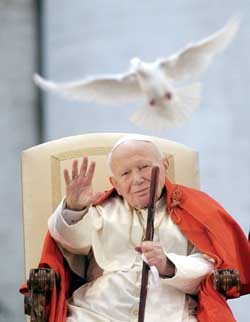
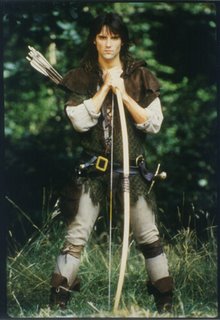 2. Beautiful Marion
2. Beautiful Marion 3. Happy couple.
3. Happy couple. 4.
4.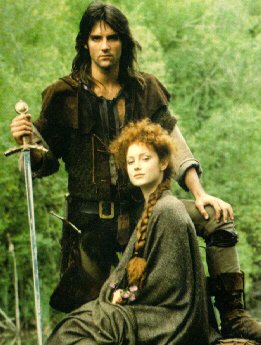 5.
5.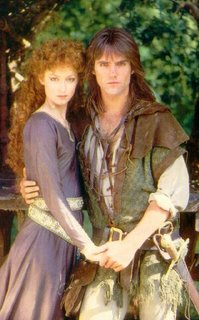 6.
6.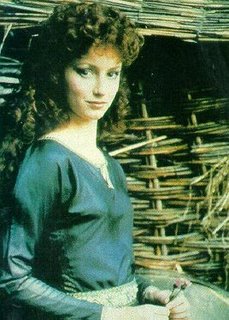 7. Happy team
7. Happy team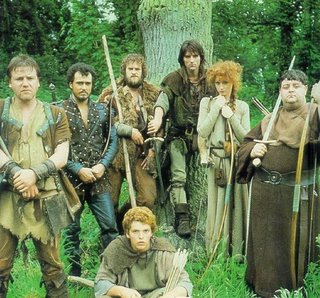 8.
8.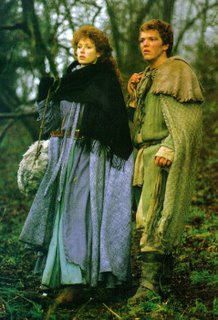 9.
9.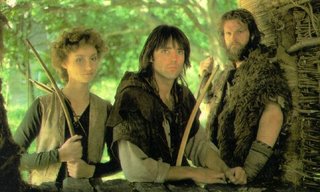 10.
10.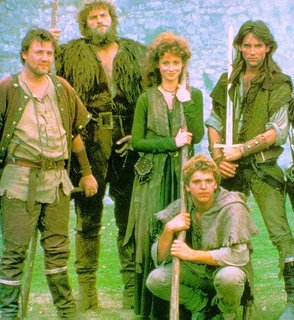 11. Fair haired Robin :(
11. Fair haired Robin :(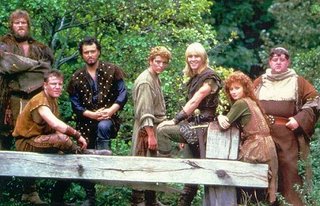
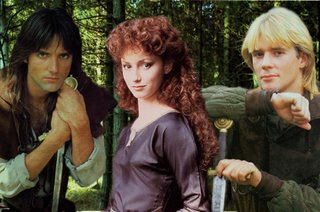 13. Who was bad in this movie?
13. Who was bad in this movie?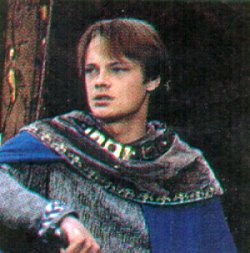 14. Another "bad" guy
14. Another "bad" guy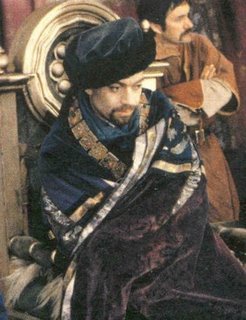 Well... in Poland we have similar character to Robin Hood. It is Janosik who was robbing in Pieniny mountains. But he is much...yonger than Robin Hood. Polish Janosik lived in XIX century. And was killed - hanged of course:(
Well... in Poland we have similar character to Robin Hood. It is Janosik who was robbing in Pieniny mountains. But he is much...yonger than Robin Hood. Polish Janosik lived in XIX century. And was killed - hanged of course:(
